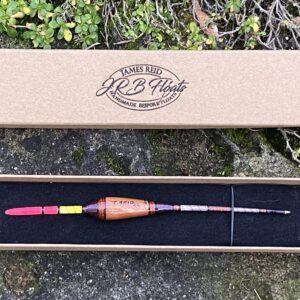Grayling floats are most effective when fishing for grayling in rivers, especially during winter when they are most active and in conditions of varying flow and depth. They are particularly useful when trotting with maggots, allowing for precise bait presentation in faster currents, and when the fish are holding near the riverbed.
Here’s a more detailed look at when to use a grayling float:
River Conditions:
Grayling often inhabit rivers with varying currents and depths. A grayling float, especially a buoyant one, helps maintain bait presentation in these conditions, allowing the bait to drift naturally with the flow.
Winter Fishing:
Grayling are known to be active feeders during the colder months, and a float fishing approach can be very effective.
Trotting:
Trotting involves letting the float and bait drift naturally downstream, mimicking the movement of insects. Grayling floats are well-suited for this technique, especially in faster currents.
Shallow, Fast Water:
When grayling are holding in shallow, fast-flowing sections, a float with good stability and buoyancy is essential for maintaining contact with the bait and detecting bites.
Depth Adjustment:
Grayling often feed close to the riverbed. Regularly adjusting the float to ensure the bait is drifting just off the bottom is crucial.
Cover and Structure:
In brighter conditions, grayling may seek cover under overhanging trees or rushes. A float can help present the bait effectively in these areas, even in deeper water.
Fussy Feeding:
Float fishing is universally effective in rivers where regulations allow it. The float allows bait presentation and holding it under cover, close to structures where fish are likely to be.
Specific Float Types:
For very shallow, turbulent swims, a grayling bobber or similar float with a short stem can be ideal. For deeper water, a larger float or waggler might be necessary.
Beyond the Cast:
When fish are beyond the reach of a normal cast, or when conditions are particularly challenging for a traditional float, feeder fishing might be an alternative


